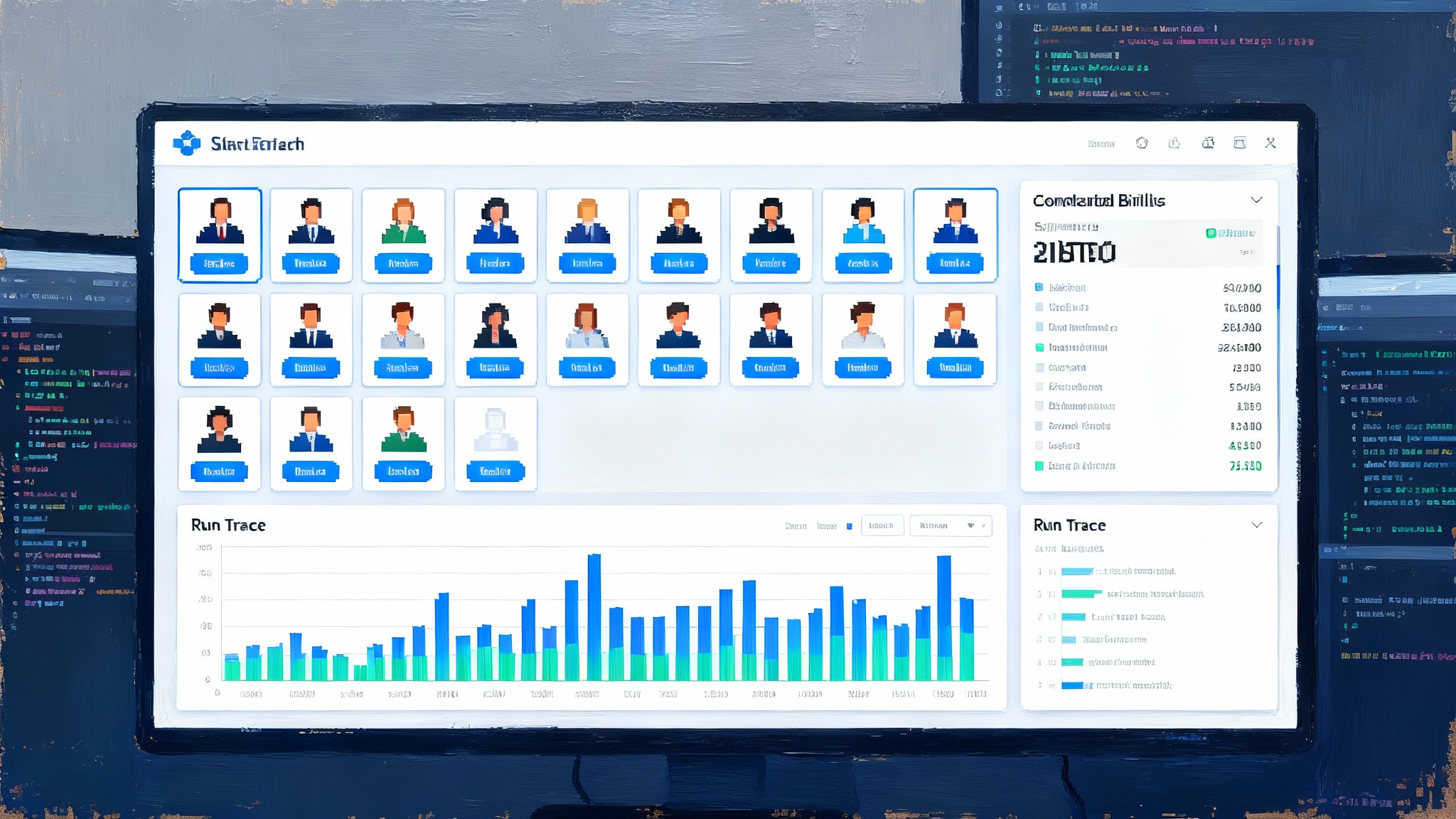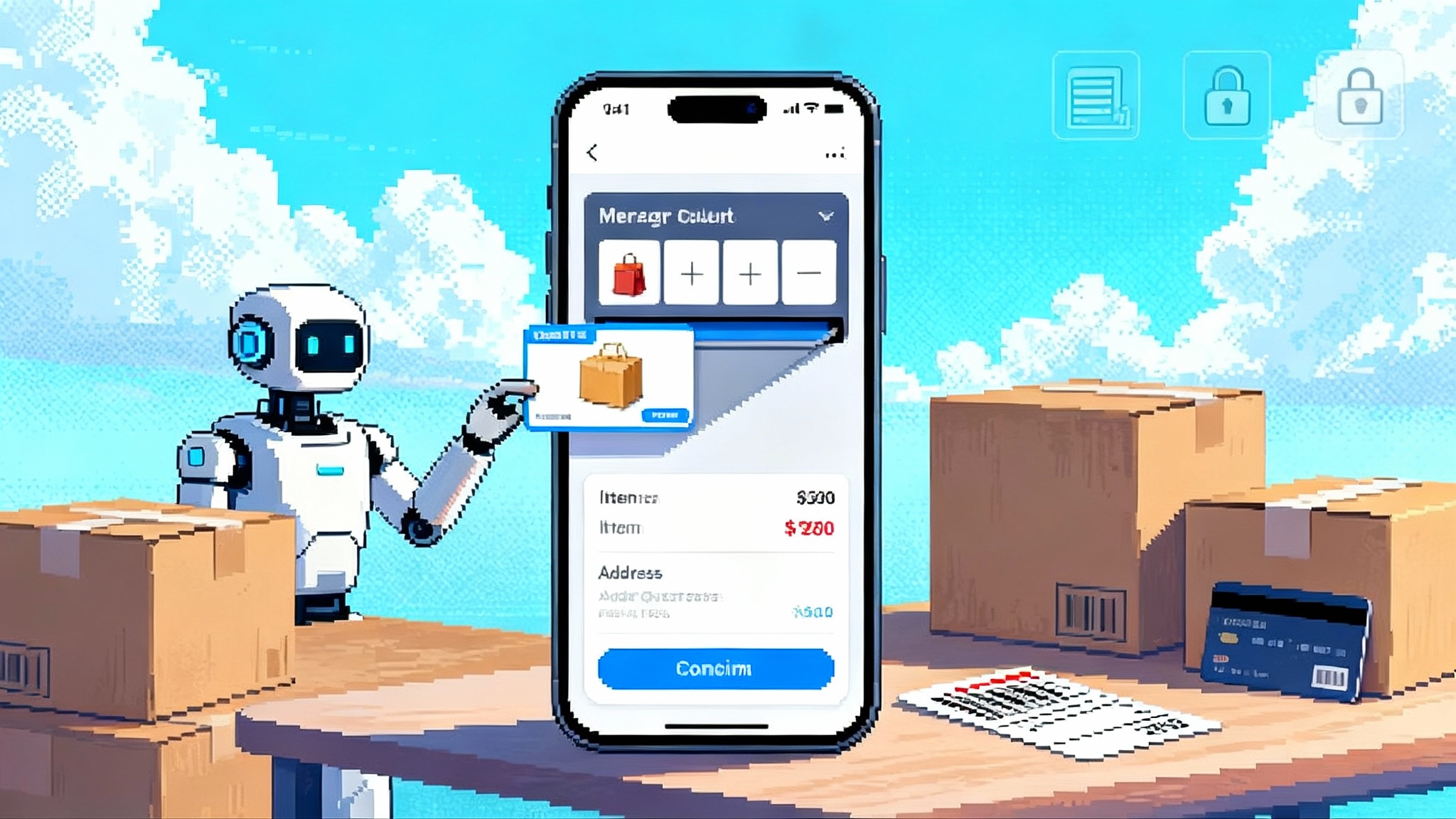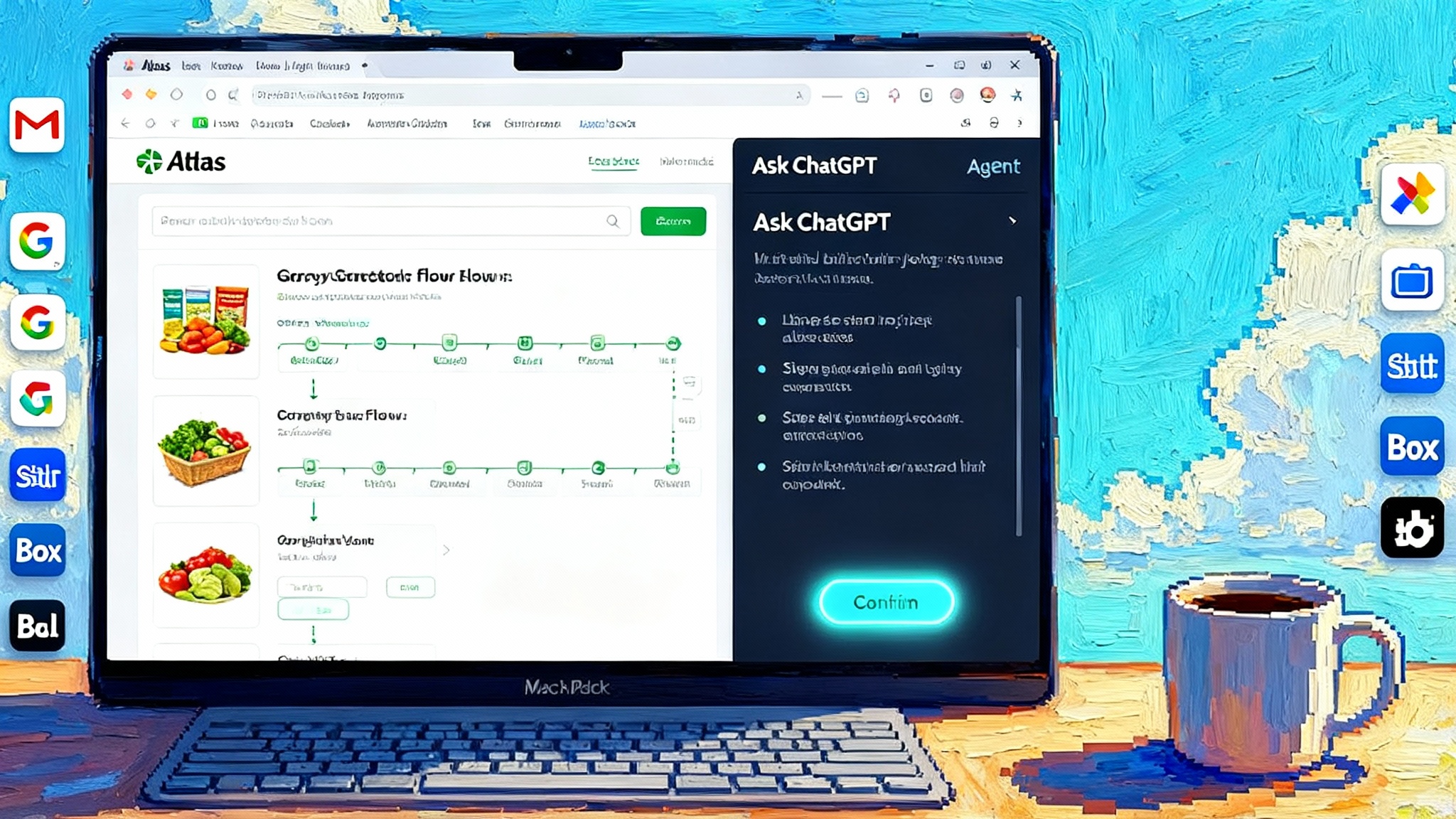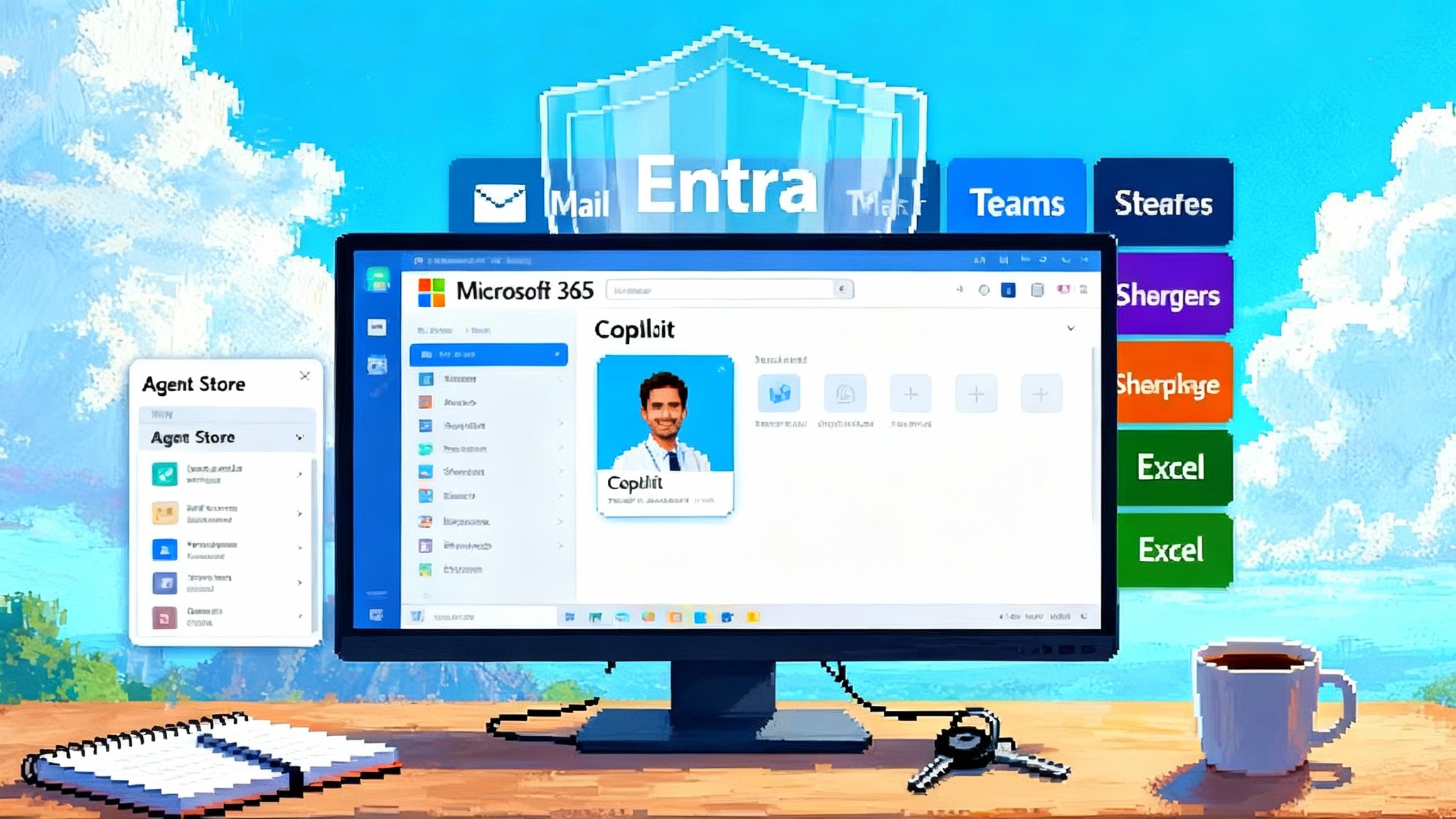Notion 3.0 Agents Turn Your Workspace Into a Runtime
Notion 3.0 upgrades AI from chat to action. Agents can work across pages and databases for up to twenty minutes with memory stored as content. Learn how to pilot safely, design jobs, and choose native agents or external orchestration.
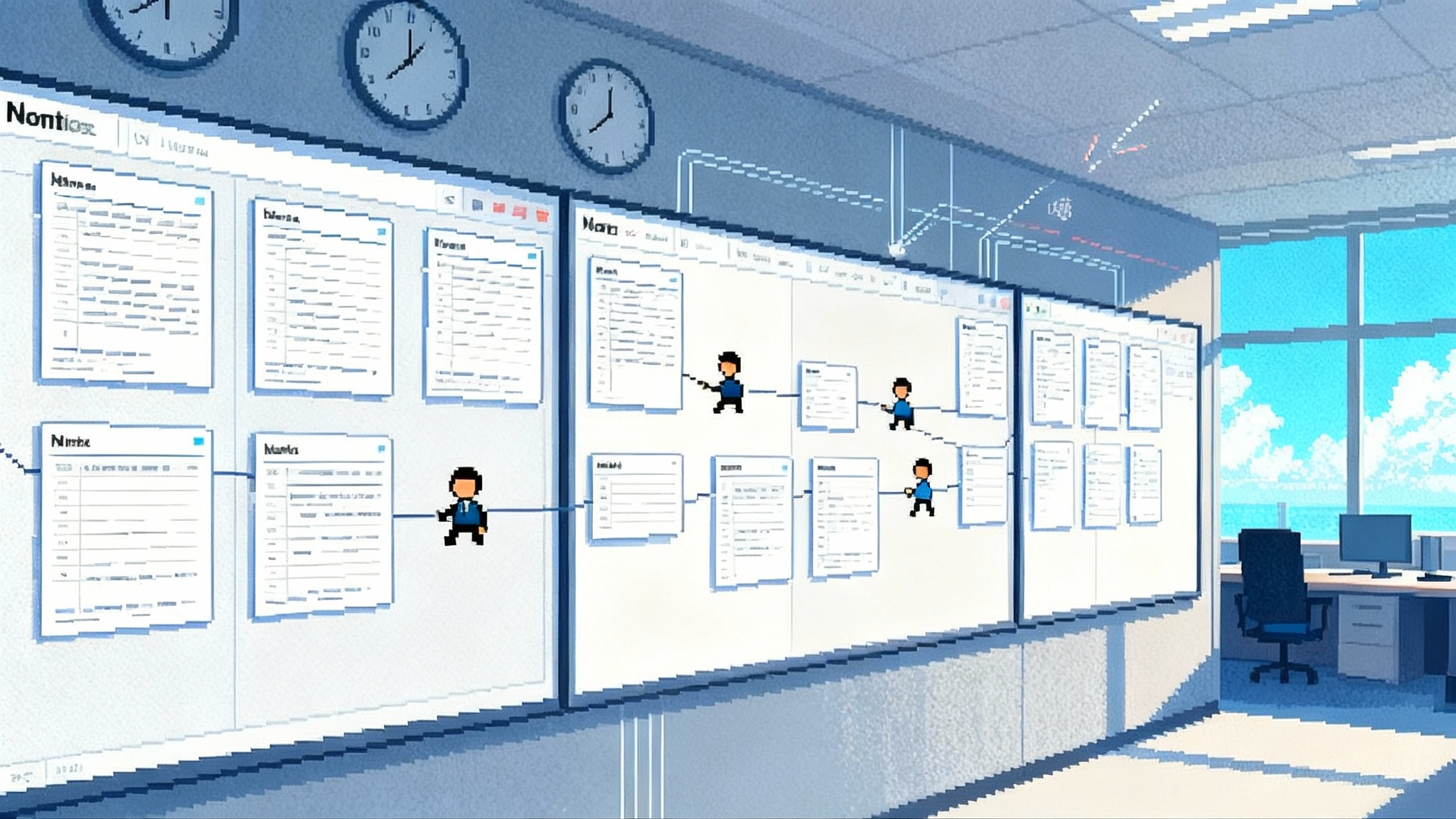
The moment work turns into actions
The most important change in Notion 3.0 is not a sidebar or a shiny button. It is a shift in who does the work. Instead of asking artificial intelligence to rewrite a paragraph or summarize a single page, you can now ask an agent to complete a job that spans dozens or even hundreds of pages and databases, and it will keep going for up to twenty minutes at a time. The company describes this explicitly in the Notion 3.0 release notes. That reframes Notion from a place where work is recorded to a place where work is executed.
What makes this consequential is not only automation. These agents operate with context that lives where teams already think and plan. Their memory is stored as content inside pages and databases. Instructions, preferences, examples, and do not touch lists become first class documents that anyone can read, refine, and version. The workspace becomes an execution environment rather than a static archive.
What an agent native workspace feels like
Picture a launch coordinator agent inside a product team. You ask it to compile customer feedback from Slack, email, and a research database into a weekly digest, deduplicate entries, tag them by theme, open follow up tasks for product managers, and update the roadmap. The agent retrieves relevant context, writes new pages, edits existing ones, and posts summaries in the appropriate place. You do not stare at a chat window hoping to see progress. Instead you watch pages appear, properties change, and dashboards refresh.
Because the agent’s memory is a page, you improve it the same way you refine a playbook. Add a section called Tone and formatting rules. List the tags that should never be used. Include examples of a good summary and a bad one. The memory is not a black box profile in a distant service. It is a document your team can read, discuss, and version.
This is the difference between an assistant and a coworker. The assistant edits text. The coworker follows a runbook, touches multiple tools, and returns when the job is done.
Platform native agents vs external orchestration
Teams will ask a practical question. Should agents run inside the platform where information already lives, or should they be orchestrated from the outside using a dedicated automation layer? Use this framework to decide:
-
Data gravity and context. Platform native agents work where data is created and consumed. They traverse databases at native speed and apply workspace metadata such as relations, rollups, and permissions. External orchestration can reach many systems but often pays a price in latency and context marshalling. When the task requires walking hundreds of records and making judgment calls using page level context, staying inside the workspace reduces impedance.
-
Latency and reliability. Every hop adds a failure mode. Platform native agents avoid multiple network round trips and schema translations. External orchestrators shine when a job spans several third party systems with strong application programming interfaces and well modeled events.
-
Permissions and compliance. Inside the platform, agents inherit the same access model as users. Least privilege, page history, and database row permissions apply without custom scaffolding. Outside the platform, the orchestration layer must replicate permissions across connectors and secrets stores. Some teams prefer that flexibility. Others prefer to push the permission burden to the system of record.
-
Observability and ownership. Platform native agents leave footprints as page edits, database mutations, and comments. That is easy to audit with built in history. External orchestrators may offer excellent logs and dashboards, but they are parallel to the work rather than the work itself. You need a separate place to reconcile who changed what and why.
-
Portability and lock in. External orchestration reduces vendor lock in and can make it easier to swap the workspace tool if necessary. Platform native agents increase dependence on a single vendor but reduce the integration surface and operational overhead. The right choice depends on how strategic the workspace is and how stable your stack is likely to be.
A simple rule emerges: if the task is mostly about transforming or enriching content already inside the workspace, keep the agent native. If the task is primarily a cross system pipeline where Notion is one of many stops, orchestrate externally and treat the workspace as an endpoint.
For broader context on how production agent platforms are forming beyond Notion, compare the distribution story in the Vercel Marketplace for agents and how enterprise platforms such as Salesforce Agentforce 360 integrate agents directly where daily work already lives.
The twenty minute window changes how we design work
A hard time budget forces focus. Agents that can run for about twenty minutes at a time cannot do everything, which is precisely why they succeed. The constraint nudges teams to define jobs that are atomic, auditable, and well scoped.
-
Batch, do not boil the ocean. If your goal is to normalize a 5,000 row database, slice it into segments. Ask the agent to process 200 rows per run with clear filters and a checklist. This creates a natural cadence and makes errors easier to detect.
-
Separate research from execution. Give the agent a research pass that compiles facts and citations into a staging database. Then run a second pass that turns research into edits and new pages. If the research is wrong, the execution never fires.
-
Plan for retries. Design jobs so that failures can be rerun without side effects. That means idempotent writes, clear markers of what has been processed, and a rollback plan using page history.
-
Favor plain contracts. Every agent should accept a clear input, produce a clear output, and leave an obvious trail. Use structured properties like Processed, Version, Reviewed by, and Publish status to communicate state.
The side benefit is emotional. Teams stop treating agents as magic and start treating them like reliable colleagues with clear shifts and repeatable tasks.
Memory that lives in pages and databases
Most agents promise memory. Very few make it tangible. When instructions and preferences are first class documents, the memory becomes a living part of the knowledge base.
-
Store instructions as a canonical page. Use headings for Voice, Quality bar, File locations, Must reference sources, and Forbidden actions. Link to example pages that represent the gold standard. This creates a contract between humans and the agent.
-
Encode preferences in databases. Use properties such as Reviewer, SLA minutes, Risk level, and Draft vs publish. Agents can use these signals to decide how cautious to be and when to request a human review.
-
Capture feedback as data. Create a Feedback on runs database with properties for Run ID, Outcome, Error type, and Fix. Agents can learn from these records and you get a visible improvement loop.
Because everything is content, the same collaboration tools that work for documents also work for agent design. Comments act as code reviews for runbooks. Mentions are assignments. Version history is a safety net.
If you are exploring agent memory across other platforms, review the playbooks in our guide to Google’s Agent Builder playbook for patterns that translate well to Notion.
Safety first: pilot with permissions and auditability
You can pilot agents safely without slowing teams. Use this concrete plan for the first month.
- Pick a low risk, high volume process. Candidates include drafting weekly status updates from a database, cleaning up tags on research notes, or triaging inbound requests.
- Create an Agent charter page. Document scope, gold standard examples, stop conditions, forbidden actions, and clear ownership.
- Use least privilege access. Start the agent in a dedicated teamspace with restricted scope. Limit it to the databases and pages it actually needs. Take advantage of database row permissions so rows can be shared with exactly the right people while preserving a shared source of truth.
- Set up a run log database. Every run becomes a record with start time, end time, pages touched, number of edits, and a link to a diff summary. The log is your audit trail and your performance dashboard.
- Gate risky writes. In early pilots, require the agent to write to Draft properties or Draft pages only. A human reviewer flips a property to Publish when ready. This is a cheap human in the loop pattern that catches early surprises.
- Establish review rituals. Run a focused retro once a week. Sample a few runs at random. Identify failure modes such as hallucinated references, permission mismatches, or formatting drift. Update the instruction page based on those findings.
- Expand carefully. When error rates stay low, widen the agent’s scope to new databases and higher impact operations. Keep the run log and the weekly retro. The goal is to scale trust as well as throughput.
Pilots do not require new software. They require clear scope, strong defaults, and the same discipline you expect from any new system.
Schedules and triggers will unlock compounding value
The first version of this future is you telling the agent to go do a thing. The next version is agents that act when the world changes. Notion has announced that custom agents will run on schedules or triggers and can be shared with the team. See the company’s overview on custom agents for how this will work.
Schedules matter because many knowledge work processes are periodic. Every Friday afternoon the team needs a project heartbeat. Every morning the leadership team wants a digest of churn risk signals. Every end of month the sales organization needs clean pipelines and standardized stages. If an agent can harvest inputs, write drafts, and move the ball forward without anyone asking, the organization builds rhythm.
Triggers matter because work is event driven. When a feature ticket exceeds a risk threshold, open an investigation template and assign a reviewer. When a customer’s sentiment drops in a feedback database, create a follow up task and link to relevant research. When design assets land in a brand library, generate variants and update a usage page. These are the kinds of if this then that patterns that make agents feel like teammates who notice and act.
The magic is in the pairing. Triggers start the job. Schedules enforce hygiene. Together they turn a knowledge base into a living system.
The template ecosystem is the real unlock
A template is a frozen decision about how to do a job. When agents become first class citizens, templates become playbooks with behavior.
-
Role templates. A Release notes editor agent that knows your voice and references the right sources. A Research triage agent that turns raw notes into clean entries. A Design librarian agent that maintains asset metadata.
-
Industry templates. An Agency retainer agent that compiles time entries and drafts monthly reports. A Healthcare compliance agent that checks documentation completeness and flags missing attestations. A B2B onboarding agent that creates a sequenced plan from a client intake form.
-
System templates. A Migration assistant that normalizes properties across databases. A KPI curator that reads team pages and updates a weekly metrics hub.
Distribution becomes straightforward. Templates turn into shareable, installable packages that include instructions, schema, and schedules. App creators will sell and support them. Teams will standardize on a handful of trusted patterns and adapt them locally.
This ecosystem reduces setup time, increases quality, and creates a healthy market for specialized expertise. It also pressures vendors to expose more control surfaces so creators can build richer behaviors. Expect agent galleries, reviews, and certifications to flourish.
Concrete actions for the next ninety days
- Pick two processes and declare them agent friendly. Document the scope, the gold standard, and the forbidden actions. Pilot for thirty days.
- Build a run log database and agree on three metrics that matter. For example: first pass acceptance rate, pages touched per minute, and time saved per run. Review weekly.
- Design your permission model for agents. Map which teamspaces and databases each agent needs. Start with read only in broad areas and write access in narrow areas. Expand deliberately.
- Write instruction pages like product specs. Include voice, examples, and explicit constraints. Treat them as living documents maintained by the team that owns the outcome.
- Decide your split between platform native and external orchestration. If the task is mostly inside the workspace, keep it native. If it spans many systems with strong events, orchestrate externally and use the workspace as a durable surface for outcomes.
- Prepare for schedules and triggers. Even if your team will not enable them until next quarter, draft the plan now. Define which jobs run daily, weekly, and monthly, and where results should land.
What changes by 2026
If agents can already handle twenty minute jobs across pages and databases, the next year will be about coverage and autonomy. Coverage means more tasks move from human initiated to scheduled or triggered. Autonomy means agents handle more of the review steps because they learn from outcomes stored in run logs and feedback databases.
By 2026, a typical mid sized team could have a handful of always on agents maintaining the hygiene of the knowledge base, filing drafts for recurring communications, and initiating follow ups when risk thresholds are crossed. Humans move upstream. Instead of formatting status updates, they decide which signals belong in the updates. Instead of triaging every inbound request, they define the rubrics.
The key to this shift will not be a single model or feature. It will be operational excellence. Teams that write clear charters, keep clean schemas, and review outcomes will trust their agents. Teams that skip those steps will wrestle with flaky behavior and will retreat to manual work.
Bottom line
Notion 3.0 turns the workspace into a runtime where agents do real work with memory and context. The twenty minute execution window imposes useful constraints that nudge teams toward smaller, auditable jobs. The platform native approach gives strong advantages in context, permissions, and observability for tasks that live inside the workspace. External orchestration still wins for broad cross system pipelines.
Adopt one mental model: treat agents like teammates with well defined jobs, measurable outcomes, and a paper trail. Write the runbook. Start with low risk work. Instrument the results. Then scale. If you do, your team will be ready when schedules and triggers mature and the knowledge base begins to take care of itself.
